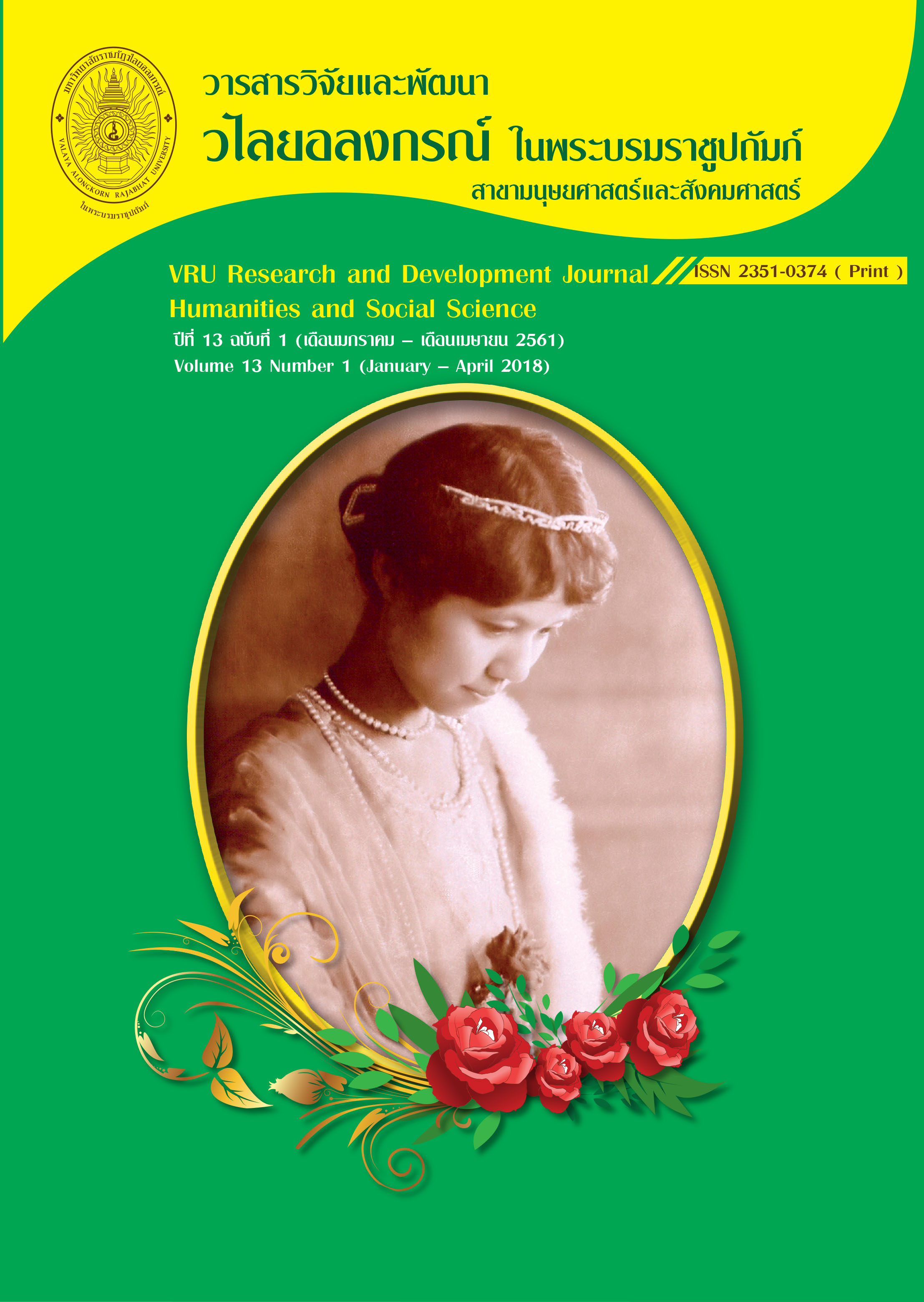การนำนโยบายการสนับสนุนธุรกิจอุตสาหกรรมอัญมณีและเครื่องประดับไทยไปปฏิบัติ
Main Article Content
Abstract
การวิจัยนี้มีวัตถุประสงค์ 1) เพื่อสังเคราะห์นโยบายของภาครัฐที่มีต่อการสนับสนุนธุรกิจอัญมณีและเครื่องประดับไทย 2) ศึกษาการนำนโยบายการสนับสนุนธุรกิจอุตสาหกรรมอัญมณีและเครื่องประดับไทยไปปฏิบัติ 3) ศึกษาแนวทางการบริหารนโยบายการสนับสนุน 4) ประเมินความเป็นไปได้ และข้อเสนอแนะเชิงนโยบาย ประชากรในการศึกษา คือองค์กรธุรกิจอุตสาหกรรมอัญมณีและเครื่องประดับไทย โดยการสุ่มตัวอย่างอย่างง่ายจำนวน 250 สำหรับการศึกษาเชิงปริมาณ และแบบเจาะจงจำนวน 25 คน สำหรับการศึกษาเชิงคุณภาพ เครื่องมือในการเก็บรวบรวมข้อมูลเป็น แบบสอบถามจำนวน 1 ชุด และ แบบสัมภาษณ์จำนวน 3 ฉบับ สถิติที่ใช้ในการวิเคราะห์ข้อมูลเชิงคุณภาพ คือการสังเคราะห์นโยบายและวิเคราะห์เนื้อหา สถิติที่ใช้ในการวิเคราะห์ข้อมูลเชิงปริมาณคือ จำนวน ร้อยละ ค่าเฉลี่ย ส่วนเบี่ยงเบนมาตรฐาน การวิเคราะห์ความแปรปรวนแบบทางเดียว ผลการวิจัย พบว่า นโยบายของภาครัฐที่มีต่อการสนับสนุนธุรกิจอัญมณีและเครื่องประดับไทย อยู่ในระดับปานกลางองค์กรมีการบริหารนโยบายภาครัฐในกรอบแนวคิดพื้นฐานของ TQM อยู่ในระดับปานกลาง การประเมินความเป็นไปได้และข้อเสนอแนะเชิงนโยบายไปปฏิบัติด้วยการนำหลักของ PDCA มีระดับนโยบายอยู่ในระดับมาก ระดับการรับรู้ของผู้ประกอบการ มีค่าเฉลี่ยอยู่ในระดับปานกลาง และระดับการนำนโยบายไปปฏิบัติในองค์กรพบว่า มีค่าเฉลี่ยอยู่ในระดับปานกลาง ผลการศึกษาเปรียบเทียบระดับการรับรู้นโยบายภาครัฐ แตกต่างกันทางสถิติที่ระดับนัยสำคัญ 0.05 ระหว่างประเภทของบริษัท อายุของบริษัท ทุนจดทะเบียน รายได้เฉลี่ยต่อเดือนจำนวนบุคลากร และคุณวุฒิส่วนใหญ่ของบุคลากร และผลเปรียบเทียบระดับการนำนโยบายไปปฏิบัติตามลักษณะข้อมูลของบริษัท พบว่า แตกต่างกันทางสถิติที่ระดับนัยสำคัญ 0.05
This research has the following objectives 1) to study to synthesize government policies towards the support of Thai gem and jewelry business. 2) to study on the implementation of policies to support Thai gem and jewelry industry 3) to study guideline for management policies supporting 4) to assess the feasibility and policy implications of adopting industrial business support policies to perform. The study population, a group of gem exporter is total of 25 questionnaires. Three interviews were used as a tool to collect data to study a sample of 250 companies. The statistics used in qualitative data analysis are policy synthesis and content analysis statistics used in quantitative data analysis, with an arithmetic mean, percentage standard deviation, one-way analysis of variance. The results are summarized as followings: the research found that Government policies on supporting gems and jewelry business are at a moderate level. The organization has government policies in support of the Thai gem and jewelry industry. The basic concept of TQM is in the medium level. Feasibility Assessment and Policy Recommendations. The main implementation of the PDCA to evaluate government policies has a very high level. The level of perception of entrepreneurs is moderate in all six aspects. The level of support in the organization is moderate. The results of a comparative study on the level of public policy perception are statistically significant at the 0.05 significant level between the company's category, company's age, registered capital, average monthly income, number of personnel, and most qualifications of personnel and comparative study results. The level of policy implementation to follow the company profile. is found that the difference is statistically significant at 0.05 level
Article Details
ลิขสิทธิ์บทความวิจัยที่ได้รับการตีพิมพ์เผยแพร่ในวารสารมนุษยศาสตร์และสังคมศาสตร์ วไลยอลงกรณ์ ในพระบรมราชูปถัมภ์ ถือเป็นกรรมสิทธิ์ของคณะมนุษยศาสตร์และสังคมศาสตร์ มหาวิทยาลัยราชภัฏวไลยอลงกรณ์ ในพระบรมราชูปถัมภ์ ห้ามนำข้อความทั้งหมดหรือบางส่วนไปพิมพ์ซ้ำ เว้นแต่จะได้รับอนุญาตจากมหาวิทยาลัยเป็นลายลักษณ์อักษร
ความรับผิดชอบ เนื้อหาต้นฉบับที่ปรากฏในวารสารมนุษยศาสตร์และสังคมศาสตร์ วไลยอลงกรณ์ ในพระบรมราชูปถัมภ์ เป็นความรับผิดชอบของผู้นิพนธ์บทความหรือผู้เขียนเอง ทั้งนี้ไม่รวมความผิดพลาดอันเกิดจากเทคนิคการพิมพ์


